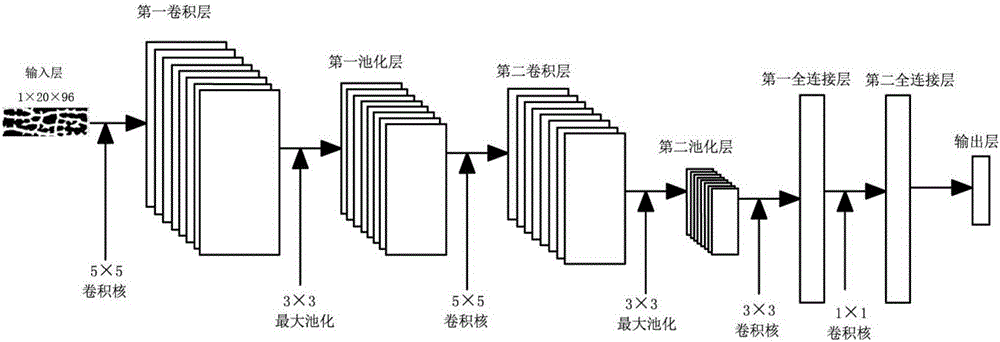Finger-vein image quality evaluation method and system based on convolutional neural network
A technology of convolutional neural network and image quality assessment, which is applied in biological neural network models, neural architectures, acquiring/arranging fingerprints/palmprints, etc.
- Summary
- Abstract
- Description
- Claims
- Application Information
AI Technical Summary
Problems solved by technology
Method used
Image
Examples
Embodiment 1
[0065] A method of finger vein image quality assessment based on convolutional neural network, such as figure 1 As shown, the method includes the following steps:
[0066] S1: Annotate the quality of finger vein grayscale images in the database, obtain grayscale images with quality labels, obtain low-quality grayscale images and high-quality grayscale images, and obtain veins of grayscale images with quality labels feature, after encoding, a binary image is obtained;
[0067] S2: Establish the binary image training sample set with quality labels obtained in step S1;
[0068] S3: Establish a grayscale image training sample set with quality labels in step S1;
[0069] S4: Convolutional neural network model for extracting grayscale image depth features; said convolutional neural network model includes: input layer, first convolutional layer, first pooling layer, second convolutional layer, second pooling layer , the third convolutional layer, the first fully connected layer, t...
Embodiment 2
[0077] A method for assessing the quality of finger vein images based on a convolutional neural network. The method is different from Embodiment 1 in that the specific method for annotating the quality of the finger vein grayscale images in the database is as follows:
[0078] S11: Selection of registration template image
[0079] Select any image of a finger, use a mature recognition algorithm to extract and match two finger vein images, and calculate the average distance between the image and the remaining images; select the image corresponding to the minimum average distance as the registration of the finger Template image, other images as test images;
[0080] S12: Annotation of image quality
[0081] Calculate the distance between each test image of the same finger and its registered template image to get the intra-class matching score; calculate the distance between each registered template image to get the inter-class matching score; according to the intra-class matchi...
Embodiment 3
[0111] A method for assessing the quality of finger vein images based on a convolutional neural network. The method differs from Embodiment 1 in that step S2 sets up the specific method of the binary image training sample set with quality labels obtained in step S1 as follows: After labeling all test images according to the labeling method in step S1, select 1155 images of 105 fingers as training images, and the remaining images as test images; in the training set, there are a total of 101 low-quality images and 1054 high-quality images . In the test set, there are 110 and 1045 high-quality and low-quality images, respectively. Since there are fewer low-quality than high-quality samples in the training set, various types of imbalances result; to overcome this problem, use the following method to generate low-quality images; for example, to generate synthetic samples of low-quality image x, first from the training set Choose two low-quality images from x 1 and x 2 . Then, u...
PUM
 Login to View More
Login to View More Abstract
Description
Claims
Application Information
 Login to View More
Login to View More - R&D
- Intellectual Property
- Life Sciences
- Materials
- Tech Scout
- Unparalleled Data Quality
- Higher Quality Content
- 60% Fewer Hallucinations
Browse by: Latest US Patents, China's latest patents, Technical Efficacy Thesaurus, Application Domain, Technology Topic, Popular Technical Reports.
© 2025 PatSnap. All rights reserved.Legal|Privacy policy|Modern Slavery Act Transparency Statement|Sitemap|About US| Contact US: help@patsnap.com



